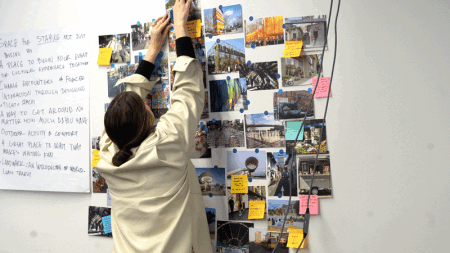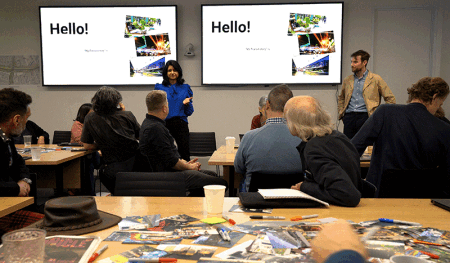The Austin Transit Partnership(ATP) announced a partnership with an international design team led by HKS, UNStudio, and Gehlto create systemwide architecture and urban design for the light-rail program of Project Connect, a major expansion of Austin’s public transit system. Project Connect is a transformative, voter-approved investment that includes light rail, expanded bus routes, and more services across the city.
Chi Lee, HKS principal and Austin office director, says, “The Project Connect plan has an entire system of multimodal transit opportunities that’s publicly available—bus-bike routes, pedestrian access, hiking, bikes, and then light rail is a piece of that. But it’s one of the biggest pieces because we do have a commuter rail, but not a robust system.”
Lee joined HKS a year ago to officially open the firm’s Austin office, which quickly grew from 17 remote employees to 33 working from their new location on San Jacinto Boulevard.
The partnership’s ability to win the 20-month contract, which will take the project through early designs and possibly design development, was largely due to its approach, according to Lee: “We really tried to look at the actual issue . . . . That is, how to get a ‘mature’ population used to moving around in cars to want to ride the train.”
In November 2020, Austin voters approved a $7.1 billion bond to fund Project Connect; however, that cost is likely to increase when the new project scope is released this spring.
“ATP is working hard to make sure that the project aligns with the budget contending with the current market conditions,” Lee says. “When the bond was passed, none of us thought that we had to contend with 30 percent increases of commodities and labor.” That has created a “misalignment” between what was originally approved by voters and current market conditions.
The community’s vision for the transit is that it will maintain equity, sustainability, and transparency as overarching priorities. A portion of the approved money—$300 million—has been earmarked to prevent displacement of people and businesses struggling to stay because of increased property values and taxes.
Designing World-Class Transit
HKS, UNStudio, and Gehl will design a technologically advanced, human-centric transit experience true to Austin’s culture and landscape. The team comprises architects and planners with collaborative mindsets and local knowledge. Their global infrastructure expertise includes similar award-winning projects in Los Angeles, Melbourne, The Netherlands, Doha, and Beijing.
“We are thrilled to work with this visionary, interdisciplinary design team” says Peter Mullan, ATP executive vice president for architecture and urban design. “The design team brings both broad international expertise delivering transit and public realm projects at the highest level of design and an acute sensitivity to Austin’s specific culture and heritage. Project Connect gives us the opportunity to stitch our community together more closely and to adapt our core values to our continued growth and our increasingly urban future. To deliver on that promise, we need to bring a human-centered approach to the center of our design process, and this team brings that focus to our collective work.”
While details are still being hammered out, Lee believes the design should be complete within the next five years, at which point pricing can be completed and construction begin. He also notes the light rail is “going to help us reach out further into our communities. And that’s another way to unlock affordability. You can now live further away and get to downtown in less time than when you had to sit in a car in traffic.” Instead of living a couple of miles away, the light rail will allow workers to live 5 to 10 miles (8.05 km to 16.1 km) away and still get to their jobs in a reasonable amount of time.
At the end of the day, Lee says the key to success will be to “make sure that it’s a great experience for the users, and make sure it touches on the important issues such as equity, affordability, sustainability, health, and wellness. It’s got to just be a pleasant experience.”
Related:
Green Financing for Transit-Oriented Development
Building on the Potential of Seven Transit-Oriented Neighborhoods in Los Angeles







